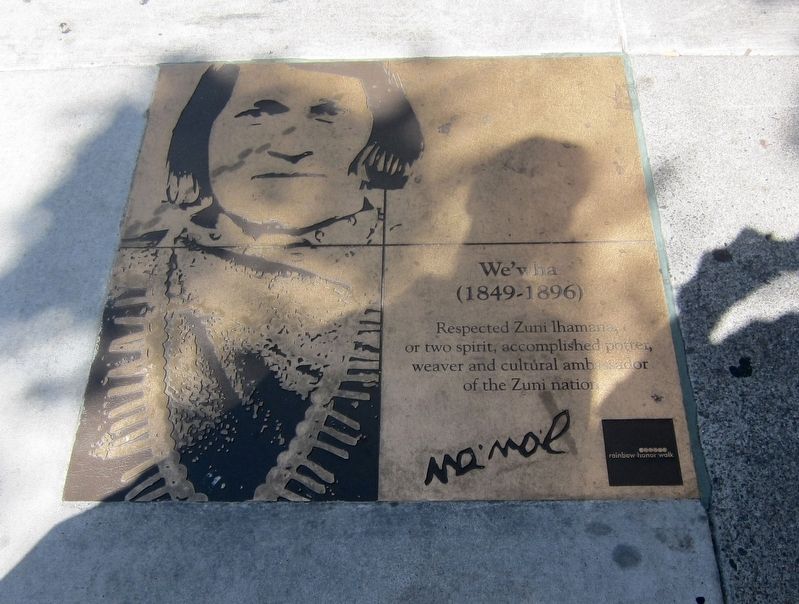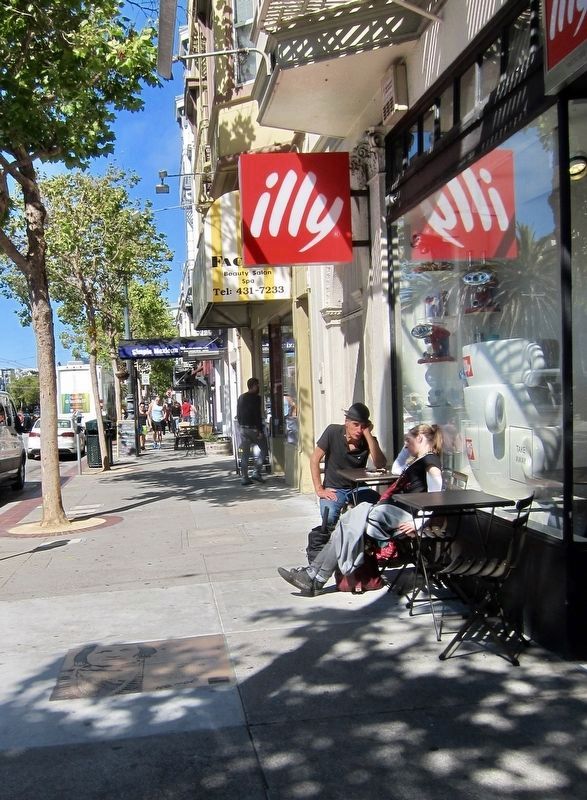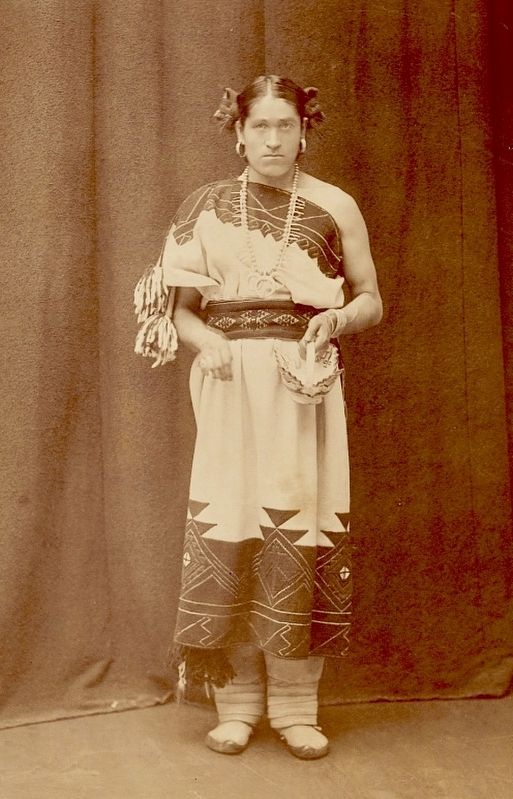The Castro in San Francisco City and County, California — The American West (Pacific Coastal)
We'wha
(1849-1896)
— Rainbow Honor Walk —
Erected 2017 by Rainbow Honor Walk.
Topics and series. This historical marker is listed in these topic lists: Native Americans • Women. In addition, it is included in the Rainbow Honor Walk series list.
Location. 37° 45.796′ N, 122° 26.042′ W. Marker is in San Francisco, California, in San Francisco City and County. It is in The Castro. Marker is on Market Street east of Castro Street, on the right when traveling east. Touch for map. Marker is at or near this postal address: 2349 Market Street, San Francisco CA 94114, United States of America. Touch for directions.
Other nearby markers. At least 8 other markers are within walking distance of this marker. Gerry Studds (a few steps from this marker); Glenn Burke (a few steps from this marker); Rikki Streicher (within shouting distance of this marker); Kiyoshi Kuromiya (within shouting distance of this marker); AIDS Memorial Quilt (within shouting distance of this marker); Josephine Baker (within shouting distance of this marker); Barbara Jordan (within shouting distance of this marker); Fereydoun Farrokhzad (within shouting distance of this marker). Touch for a list and map of all markers in San Francisco.
Also see . . . We'wha (Wikipedia). "We'wha (1849–1896, various spellings) was a Zuni Native American from New Mexico. She was the most famous lhamana, a traditional Zuni gender role, now described as mixed-gender or Two-Spirit. Lhamana were male-bodied but performed primarily feminine tasks, wearing a mixture of women's and men's clothing and doing a great deal of women's work as well as serving as mediators....We'wha is the subject of the book The Zuni Man-Woman by Will Roscoe. The anthropologist Matilda Coxe Stevenson also wrote a great deal about We'wha, and even hosted her on their visit to Washington D.C. in 1886. During that visit, We'wha met President Grover Cleveland and was generally mistaken for a cisgender woman. One of the anthropologists close to her described We'wha as "the strongest character and the most intelligent of the Zuni tribe". She is historically known mainly for transgender identity. In the nineteenth century this status was called berdache, being anatomically one sex but performing tasks that were equated with the other. During her lifetime, she came in contact with many European-American settlers, teachers, soldiers, missionaries, and anthropologists. One anthropologist she met was Matilda Coxe Stevenson, who would later become a prominent figure in We'wha's life. Stevenson wrote down her observations of We'wha, going on to state, 'She performs masculine religious and judicial functions at the same time that she performs feminine duties, tending to laundry and the garden' " (Submitted on July 19, 2018.)
Additional keywords. LGBT LGBTQ
Credits. This page was last revised on February 7, 2023. It was originally submitted on July 19, 2018, by Andrew Ruppenstein of Lamorinda, California. This page has been viewed 469 times since then and 33 times this year. Photos: 1, 2, 3. submitted on July 19, 2018, by Andrew Ruppenstein of Lamorinda, California.


